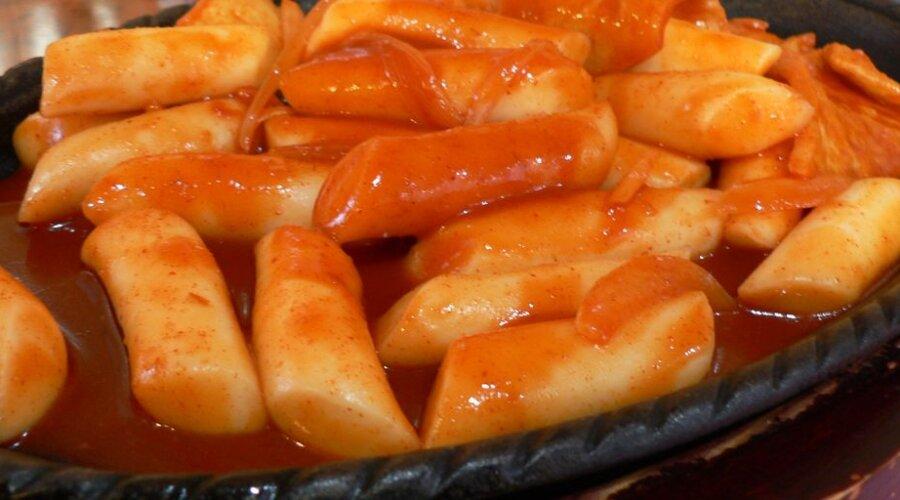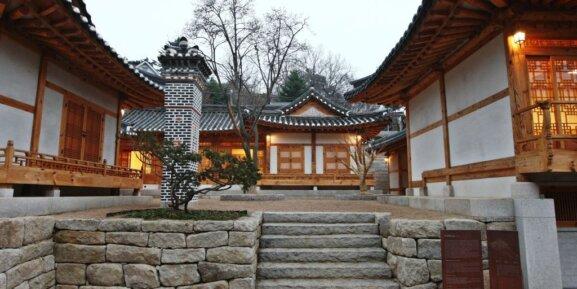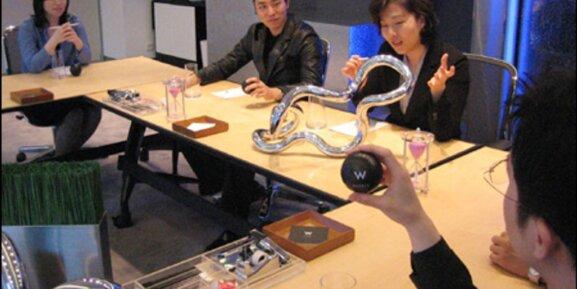“Cuisine Chronicles: A Culinary Journey Through South Korea’s Regions”
Cuisine Chronicles: A Culinary Journey Through South Korea’s Regions takes readers on an immersive exploration of South Korea’s diverse and flavorful culinary landscape. From bustling street food markets in Seoul to the royal kitchens of Gyeongju, this article delves into the rich traditions, unique ingredients, and modern innovations that define the country’s regional cuisines. Each section highlights a different region, showcasing the signature dishes and culinary practices that make South Korea a food lover’s paradise.
Key Takeaways
- South Korea’s culinary landscape is diverse, with each region offering unique and flavorful dishes.
- Seoul is renowned for its vibrant street food culture, featuring popular dishes like Tteokbokki, Hotteok, and Gimbap.
- Jeonju is famous for its Bibimbap, a dish that artfully combines rice, vegetables, and various toppings.
- Busan’s coastal location makes it a seafood paradise, with fresh offerings at Jagalchi Fish Market and specialties like Korean sashimi and fish cake skewers.
- Jeju Island boasts unique flavors such as Black Pork BBQ and Hallabong oranges, reflecting its distinct local culture and ingredients.
Seoul’s Street Food Extravaganza

Seoul’s street food scene is nothing short of legendary. As twilight descends, the streets come alive with the buzz of hawkers and the chatter of customers. The air is perfumed with a delectable melange of aromas, from the fiery spices of Tteokbokki to the tantalizing fragrance of grilling meat. Brightly lit stalls line the pavements, each presenting a smorgasbord of delicacies crafted with meticulous precision and skill.
Tteokbokki: Spicy Rice Cakes
Tteokbokki is a must-try when exploring Seoul’s street food. These spicy rice cakes are a staple at street vendors, offering a perfect blend of chewy texture and fiery flavor. The dish is often garnished with fish cakes, boiled eggs, and scallions, making it a hearty snack that packs a punch.
Hotteok: Sweet Pancakes
Hotteok is a popular winter treat that will warm your heart. These sweet pancakes are filled with a mixture of brown sugar, honey, chopped peanuts, and cinnamon. When cooked, the filling melts into a gooey delight that contrasts beautifully with the crispy exterior. It’s a perfect example of how simple ingredients can create something extraordinary.
Gimbap: Korean Sushi Rolls
Gimbap is often referred to as Korean sushi rolls, but it has its own unique twist. These rolls are made with seasoned rice, various vegetables, and proteins like beef, tuna, or ham, all wrapped in seaweed. Gimbap is a versatile dish that can be enjoyed as a quick snack or a light meal, making it a favorite among locals and tourists alike.
Exploring Seoul’s street food markets like Myeongdong and Gwangjang offers a front-row seat to the art of Korean cooking. The preparation of street food is a spectacle in itself, connecting people to the rich culinary heritage of the country.
Jeonju’s Bibimbap Bliss

The Art of Bibimbap
Jeonju bibimbap is a feast for both the eyes and the palate. It comes in a large, shiny, stainless-steel bowl, filled with a base of steamed rice, yukhoe, mung bean jelly, steamed bracken, dried seaweed, gochujang (a red chili paste), and a few side dishes. All variations of bibimbap follow the same baby food principle: sling everything in a bowl, stir it up, spice it up, and spoon it down.
Traditional Ingredients
The ingredients in Jeonju bibimbap are as traditional as they come. You’ll find yukhoe, which are raw strips of julienned beef, adding a unique texture and flavor. Mung bean jelly and steamed bracken are also staples, providing a delightful mix of textures. And let’s not forget the gochujang, which gives the dish its signature spicy kick.
Modern Twists
While the traditional recipe is beloved, modern chefs in Jeonju are not afraid to experiment. Some add avocado or even truffle oil for a contemporary twist. Others might incorporate quinoa instead of rice for a healthier option. These modern variations keep the dish exciting and relevant, ensuring that Jeonju bibimbap remains a culinary icon.
Jeonju’s cherry blossoms create a magical backdrop for enjoying a bowl of bibimbap, making the experience even more blissful.
Busan’s Seafood Paradise

Busan, a vibrant port city on the southeastern coast of South Korea, is globally recognized for its illustrious cinematic heritage and flourishing food culture. At the nexus of these two realms lies the BIFF Square Street Food Market, a unique gastronomic hub that pays homage to both Busan’s love for cinema and its delectable culinary offerings. This lively food market, named after the Busan International Film Festival (BIFF), marries the excitement of cinema with the pleasure of street food, creating an unforgettable experience for visitors.
Jagalchi Fish Market
The Jagalchi Fish Market is the heart of Busan’s seafood scene. Here, you can find an array of fresh seafood, from fish to octopus, and even sea squirts. The market is a bustling hub where locals and tourists alike come to enjoy the freshest catches of the day. It’s a must-visit for any seafood lover.
Hoe: Korean Sashimi
Hoe, or Korean sashimi, is a delicacy that you simply cannot miss when in Busan. This dish features thinly sliced raw fish, often served with a variety of dipping sauces and side dishes. The freshness of the fish is paramount, making it a true highlight of Busan’s culinary offerings.
Eomuk: Fish Cake Skewers
Eomuk, or fish cake skewers, are a popular street food in Busan. These skewers are made from ground fish mixed with various ingredients, then shaped and cooked to perfection. They are often enjoyed with a hot broth, making them a comforting and delicious snack.
For a cozy stay in Busan, consider booking a 3-bed private room w/ shared bathroom in Seomyeon. This guesthouse offers convenient amenities and is close to public transportation and entertainment centers.
Gyeongju’s Royal Cuisine

Banquet Fit for Kings
Gyeongju’s royal cuisine is a culinary experience that transports you back to the Silla Dynasty. Imagine dining like kings and queens with elaborate dishes that are as much a feast for the eyes as they are for the palate. The traditional banquet, known as surasang, includes a variety of dishes meticulously prepared to showcase the best of Korean culinary techniques.
Historical Significance
The historical significance of Gyeongju’s royal cuisine cannot be overstated. This ancient city, once the capital of the Silla Kingdom, has preserved its culinary heritage through generations. The dishes often feature ingredients that were considered luxurious and rare, reflecting the opulence of the royal court. Exploring these flavors offers a unique glimpse into Korea’s rich history where tradition and innovation blend for memorable adventures.
Signature Dishes
Some of the signature dishes you must try include:
- Gomtang: A rich beef soup with rice, spring onion, and thin, noodle-like egg strips.
- Heotjesabap: A dish that mimics the food offered during ancestral rites but is enjoyed in everyday settings.
- Sanjeok: Skewered meat and vegetables, often served during special occasions.
Gyeongju’s royal cuisine is not just about food; it’s about experiencing a part of Korea’s cultural and historical tapestry.
Jeju Island’s Unique Flavors

Jeju Island, off the southern coast of South Korea, offers a culinary experience that’s quite different from the mainland. The island is known for its fresh vegetables and almost no spice at all, making its dishes stand out in the Korean culinary landscape.
Black Pork BBQ
Jeju’s black pork is a must-try. This pork is known for its tender and juicy texture, and it’s often grilled right at your table. The unique flavor comes from the breed of pig native to the island, which is raised in a specific way to enhance its taste.
Seafood Hotpot
Jeju’s proximity to the sea means that seafood is a staple here. The seafood hotpot is a delightful mix of fresh fish, shellfish, and vegetables, all simmered together in a savory broth. It’s a comforting dish that’s perfect for sharing with friends and family.
Hallabong Oranges
Jeju is famous for its fresh orange gardens, and the Hallabong orange is a local favorite. These oranges are sweet, juicy, and have a unique bump on the top, making them easily recognizable. They are often used in various dishes and even in making orange-flavored fried chicken, a special dish on Jeju Island.
The food of Jeju Island is a revelation, offering a unique blend of flavors that you won’t find anywhere else in Korea.
Chuncheon’s Chicken Delights

Dakgalbi: Spicy Stir-Fried Chicken
Dakgalbi is a stir-fried chicken dish from the northeastern city of Chuncheon. Cooked on a large, round hot plate that’s built into the table, the dish includes cabbage, rice cakes, onions, coarsely chopped leeks, and sweet potatoes – all bathed in a hot, slightly sweet sauce made of red pepper paste, soy sauce, and turmeric. It’s a mess, a mistake that works, and a must-try when visiting Chuncheon.
Makguksu: Buckwheat Noodles
Makguksu is a refreshing buckwheat noodle dish, perfect for cooling down on a hot day. The noodles are typically served in a chilled broth with a variety of toppings like cucumber, radish, and a boiled egg. The dish is often enjoyed alongside dakgalbi, making for a perfect culinary pairing.
Local Dining Spots
Chuncheon is dotted with numerous local dining spots where you can enjoy these delicious dishes. Here are a few recommendations:
- 1.5 Dak Galbi: Located at 77 Human-ro, Hupyeong 3(sam)-dong, this spot is famous for its dakgalbi.
- Hanokjib Kimchi-jjim: Situated at 178 Naengcheon-dong, Seodaemun-gu, Seoul, this place offers a variety of traditional Korean dishes.
When in Chuncheon, make sure to explore the local dining spots to get the full experience of the city’s culinary delights.
Andong’s Traditional Fare

Jjimdak: Braised Chicken
Andong’s Jjimdak is a hearty and flavorful dish that combines braised chicken with a variety of vegetables and glass noodles in a savory soy-based sauce. The depth of flavor and texture in this dish exemplifies the mastery of traditional Korean cooking techniques. It’s a must-try for anyone visiting the region.
Heotjesabap: Fake Ancestral Ritual Food
Heotjesabap is a unique dish that mimics the food traditionally offered during ancestral rites. It includes a variety of side dishes, rice, and soup, making it a wholesome and nourishing meal. This dish offers a glimpse into the cultural and historical significance of Korean culinary traditions.
Andong Soju
Andong Soju is a traditional Korean distilled spirit that has been made in the region for centuries. Known for its smooth and clean taste, it’s a popular choice among locals and visitors alike. A visit to Andong wouldn’t be complete without sampling this iconic beverage.
When in Andong, make sure to explore the local markets and try these traditional dishes. They offer a true taste of the region’s rich culinary heritage.
Conclusion
Wrapping up our culinary journey through South Korea, it’s clear that each region offers its own unique flavors and stories. From the bustling street food stalls of Seoul to the traditional dishes of Andong, every bite is a testament to the country’s rich history and vibrant culture. Whether you’re a seasoned foodie or just starting to explore Korean cuisine, there’s always something new and exciting to discover. So, grab your chopsticks and get ready for an adventure—because in South Korea, the food is just the beginning of the story.
Frequently Asked Questions
What is the main focus of the article ‘Cuisine Chronicles: A Culinary Journey Through South Korea’s Regions’?
The article explores the diverse culinary traditions of South Korea, focusing on regional specialties and iconic dishes from various parts of the country.
What are some popular street foods in Seoul?
Popular street foods in Seoul include Tteokbokki (Spicy Rice Cakes), Hotteok (Sweet Pancakes), and Gimbap (Korean Sushi Rolls).
What makes Jeonju’s Bibimbap unique?
Jeonju’s Bibimbap is renowned for its use of traditional ingredients and artistic presentation. The dish often includes a variety of vegetables, rice, and a spicy sauce, and can also feature modern twists.
What can visitors expect at Busan’s Jagalchi Fish Market?
Visitors to Busan’s Jagalchi Fish Market can expect a vibrant atmosphere filled with fresh seafood. The market is famous for its Hoe (Korean Sashimi) and Eomuk (Fish Cake Skewers).
What is special about Jeju Island’s cuisine?
Jeju Island’s cuisine is unique due to its local ingredients and flavors. Signature dishes include Black Pork BBQ, Seafood Hotpot, and Hallabong Oranges.
What are some traditional dishes from Andong?
Traditional dishes from Andong include Jjimdak (Braised Chicken), Heotjesabap (Fake Ancestral Ritual Food), and the famous Andong Soju.



